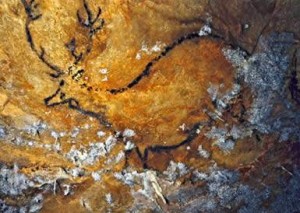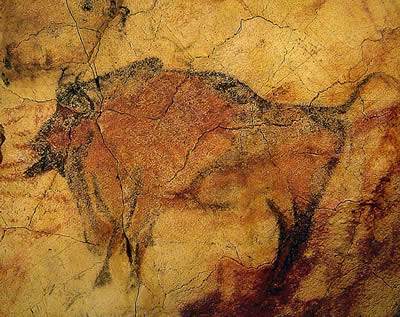Hi viewers,
There are lot of different types of design concepts in the design industry today like retro, vintage, jazzy, grunge, sleek, clean, professional and etc.,. So i wanted to know about all these different types of design concepts and started doing some research in it. Only when i started digging in this regard i came to know there had been lots of design concepts from time to time. So i decided to put an episodic post about design history. This is the first episode and from now onwards on every Thursday this we will be posting an article about design history. I kindly request all viewers to come and see this weekly episodic post every week and get gained.
Paleolithic or “Old Stone Age” is a term used to define the oldest period in the human history. It began about 2 million years ago, from the use of first stone tools and ended about 13,000 BC.
Subdivisions of the Paleolithic include the:
• Lower Paleolithic (Oldowan, Clactonian, Abbevillian, Acheulean)
• Middle Paleolithic, the time of the hand axe-industries (Mousterian)
• Upper Paleolithic (Châtelperronian, Aurignacian, Solutrean, Gravettian, Magdalenian).
The Paleolithic is followed by the Mesolithic or Epipaleolithic.
Artistic expression emerged for the first time with ochre used as body paint and some early rock art appearing. Paleolithic Art, produced from about 32,000 to 11,000 years ago, falls into two main categories: Portable Pieces and Cave Art. In art, the Paleolithic era is marked by cave paintings and drawings of animals.
It is thought that the cave art or paintings were used for the following purposes:-
• To represent the animals they need to hunt, either for their food or for their protection
• The paintings were some type of ritual related to the animals which were considered sacred and were given god-like qualities.
• It has also been suggested that the paintings represent primitive calendars or almanacs, “coming of age” ceremonies, records of tribal migrations, and mystic paintings during a shamanistic trance.
Paleolithic art can be categorized as:-
• Invitational that is, created and viewed on purpose by selected or invited individuals for specific purposes.
• Public, that is, created to be viewed by anyone in the area or passing by the area, such as a public monument, territorial marker, or gravestone
• Personal that is, small private objects carried by individuals as ritual items or charms.
The animal figures are both naturalistic and stylized, often showing fine details that suggest keen familiarity with the animal painted or drawn. There does not appear to be a “ground line” in the cave paintings or a sense of depth, although people today tend to understand overlapping figures as suggesting an illusion of three-dimensional space. The overlapping of figures may be due to the oil lamp or candle lighting which would illuminate small areas at a time; such lights have been found inside the caves. There the human figures appear in groups actively pursuing animals or at least are depicted with a potential for movement.
When we look into these Paleolithic arts we feel that they are not really such great or doesn’t gives any realistic effects or we don’t find any wow factor in them. But keenly noticing and going through these arts we can find that these are really some great masterpieces which contain lots of details including depth, camouflaging, and lighting. We can easily understand the background and the time or season of the scene even when they are merely present or represented.
Some famous Paleolithic art concepts were developed here:-
• Altamira
• Lascaux
This Paleolithic art has even been used in today’s art. A very good example of that is the FIFA 2010 world cup logo.











Interesting article! I took History of Art 1 and 2 not so long ago and I remember becoming fascinated with prehistoric art, especially from the Altamira cave paintings in Spain. Somehow modern art is looking back in time and trying to revive old prehistoric art.
Love your site btw!
Thank you Eric. Thank you very much for your acknowledgment. This will post will continue on every week and so stay in touch.
Paleolithic or “Old Stone Age” is a term used to define the oldest period in the human history. The Paleolithic or Paleolithic.
Thank you Web Design Albuquerque, stay in touch with animhut for more tuts and etc.,
I eventually made a decision to drop a thought, and let me tell you this is certainly another very strong post. I’ve been browsing some of your earlier content and have been visiting your blog site regularly|Hello, I really enjoy your piece of writing.
hi this is nice post thanks.
The Upper Paleolithic (or Upper Palaeolithic) is the third and last subdivision of the Paleolithic or Old Stone Age as it is understood in Europe, Africa and Asia.